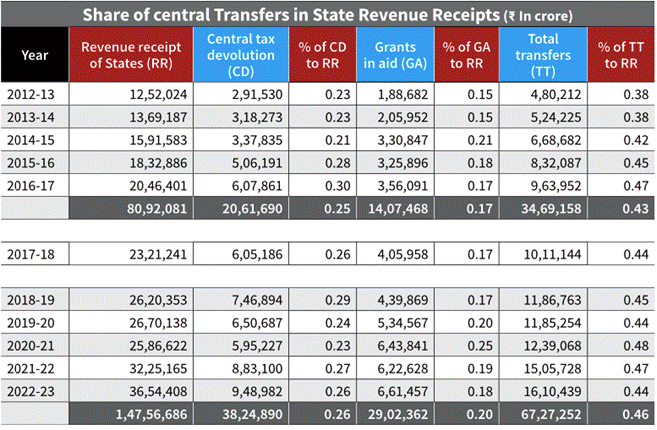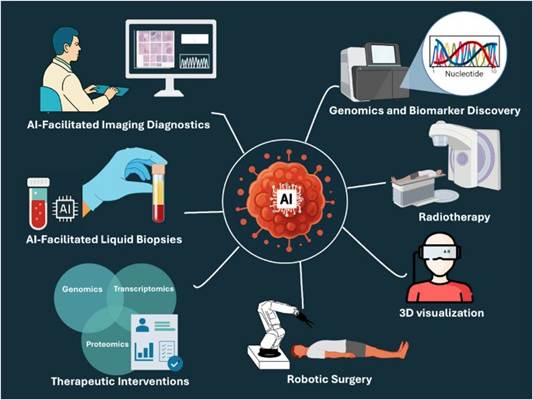Published on Oct 17, 2025
Daily Current Affairs
Current Affairs 17 October 2025

Content
- Restoring fiscal space for the States
- Russia backs AMCA, offers to make Su-57 jets in India
- Google’s new AI finds promising approach for cancer treatment
- Sustainable fuel use could quadruple by 2035: IEA
- 20 years of RTI Act: The slow unravelling of India’s transparency law
Restoring fiscal space for the States
Why is it in the News?
- The GST compensation cess has been merged with the regular GST, ending the compensation mechanism for States.
- This move is expected to pass on over₹2 lakh crore in tax benefits to consumers and potentially boost local demand.
- Certain States fear revenue losses and erosion of fiscal autonomy, arguing that no proper estimation of losses has been made.
- The decision reignites discussions on Centre-State fiscal relations, cooperative federalism, and the sharing of tax powers.
Relevance
- GS-3: Indian Economy – Taxation, Centre-State relations, Fiscal Federalism, Public Finance, Revenue Sharing.
GST and Fiscal Policy
GST Introduction:
- Launched in July 2017 through the 101st Constitutional Amendment.
- Replaced multiple indirect taxes with a common destination-based tax, shared between Centre and States.
- Initial GST compensation mechanism ensured States were not worse off due to revenue loss.
Centre-State Fiscal Relations:
- Articles 246–293 govern taxation powers and transfers.
- Finance Commission (Article 280) recommends devolution of funds to States.
- Central transfers still account for 44% of States’ revenue receipts, with Bihar at 72% dependence, Haryana at 20%.
- Dependence on Central transfers affects liquidity, fiscal autonomy, and political leverage.
Revenue Sharing History:
- Pre-GST (2012-17): Centre collected 67%, States 33%. Post-GST (2018-23): ratio remained similar.
- Devolution share recommended by Finance Commissions increased from 29.5% (11th FC) → 42% (14th FC), but actual devolution fell short due to cesses and surcharges, which remain non-shareable.

Overview
Impact of GST Compensation Cess Merger
- Consumers may benefit from lower prices, boosting demand.
- States risk revenue loss: compensation previously guaranteed annual shortfalls.
- Cess and surcharge previously gave the Centre additional leverage, now merged, reducing that buffer.
Erosion of Fiscal Autonomy
- GST centralises tax power in the GST Council, dominated by the Centre.
- States’ ability to independently raise revenue is limited.
- Progressive States (e.g., Tamil Nadu, Maharashtra) contribute more to taxes but cannot fully retain the benefits.
Structural Issues in State Finances
- Expenditure responsibilities are higher at State level: health, education, agriculture, local governance.
- Central transfers and grants (CSS, CFS, Finance Commission) supplement but are performance-based or conditional.
- Heavy dependence on the Centre creates fiscal vulnerability and political friction, especially in opposition-ruled States.
Proposed Solutions for Greater Fiscal Autonomy
- Sharing personal income tax base with States on a 50:50 basis, similar to GST.
- Allowing States to top up income tax rates without altering the current levy system.
- Such reforms would:
- Reduce dependency on Centre.
- Improve liquidity and planning.
- Reward progressive States contributing higher revenue.
Comparative Perspective
- Example of Canada: Federal govt collects 46%, sub-national governments 54%; federal spends 40%, provinces spend 60%.
- Suggests a model where States have more autonomy in raising resources and spending, improving accountability and service delivery.
Takeaway
- GST restructuring is a double-edged sword: consumer benefit vs. potential revenue loss for States.
- Centralised tax authority ensures uniformity but reduces State fiscal autonomy.
- A dynamic approach to tax sharing and grants is critical to maintain cooperative federalism.
- Fiscal reform may require structural redesign of transfers, tax bases, and conditionalities to empower States.
Russia backs AMCA, offers to make Su-57 jets in India
Why is it in the News?
- Russia has expressed readiness to support India’s Advanced Medium Combat Aircraft (AMCA) programme by offering local production of Su-57 fifth-generation fighter jets.
- The announcement highlights India-Russia defence cooperation amid geopolitical shifts in global energy and defence trade.
- Both countries are exploring next-generation technologies: anti-drone systems, advanced radars, and precision strike capabilities.
Relevance
- GS-3: Defence and Security – Defence production, Aerospace technology, Strategic partnerships.
- GS-2: International Relations – India-Russia strategic partnership, Geopolitics, Indo-Pacific security dynamics.
India-Russia Defence Ties
Historical context
- India has relied on Russia for over six decades for defence equipment.
- Nearly 70% of India’s military hardware is of Russian origin.
- Past collaborations include BrahMos supersonic cruise missile, now being upgraded to a hypersonic version.
Strategic significance
- Russia has been a trusted defence partner, supporting India’s military modernization.
- Defence cooperation extends beyond purchases to joint development, co-production, and technology sharing.
Overview
AMCA and Su-57 Collaboration
- AMCA: India’s indigenous fifth-generation fighter programme, aimed at next-gen combat capabilities.
- Su-57 :
- What it is: Russia’s fifth-generation stealth multirole fighter aircraft, designed for air superiority, ground attack, and precision strike missions; comparable to the US F-22 and F-35.
- Capabilities: Stealth features, supercruise (sustained supersonic speed without afterburners), advanced avionics, AESA radar, integrated electronic warfare systems, and high maneuverability for air-to-air and air-to-ground combat.
- Weapons & Operational Edge: Equipped with long-range air-to-air missiles, precision-guided munitions, and capable of networked warfare; can operate in contested airspaces with enhanced survivability and situational awareness
- Russia’s offer of local Su-57 production:
- Reinforces joint development and technology transfer.
- May accelerate AMCA programme and reduce import dependence.
- Strengthens India’s aerospace industrial base.
Geopolitical Implications
- Amid U.S. sanctions and trade pressures, Russia emphasizes alternative logistics and payment mechanisms, ensuring continuity in defence ties.
- India-Russia partnership remains a counterbalance in Indo-Pacific geopolitics and global arms supply networks.
- Russia’s energy cooperation remains cost-effective despite U.S. pressure, showing strategic interdependence beyond defence.
Technological and Industrial Impact
- Joint production of Su-57 and AMCA can:
- Boost R&D and skill development in Indian defence industry.
- Facilitate indigenous design, assembly, and maintenance capabilities.
- Expand collaboration in precision strike, radar, and anti-drone technologies, critical for modern warfare.
Operational Lessons and Validation
- Russia highlights effectiveness of its equipment in Operation Sindoor, underlining reliability in real-world operational scenarios.
- Joint platforms like BrahMos demonstrate success of India-Russia co-production and tech sharing model.
Takeaway
- India-Russia defence ties are moving from buyer-seller to co-development model.
- Local production of Su-57 aligns with India’s Make in India and defence self-reliance objectives.
- Strategic, technological, and industrial dimensions of cooperation enhance India’s military modernisation while reducing vulnerability to external pressures.
- This collaboration may redefine India’s aerospace and fighter jet capabilities, giving it a qualitative edge in air warfare.
Google’s new AI finds promising approach for cancer treatment
Why is it in the News?
- Google unveiled AI tools (C2S-Scale 27B) that discovered a novel drug combination for detecting tumors, which was previously unknown to human experts.
- The AI-predicted drug candidate, silmitasertib, showed effectiveness in laboratory validation, marking a milestone in AI-assisted scientific discovery.
- The research opens a new approach to cancer detection and therapy development, emphasizing AI’s role in translating biological data into actionable hypotheses.
Relevance
- GS-3: Science & Technology – AI in healthcare, biotechnology, drug discovery, foundation models.

AI in Drug Discovery
C2S-Scale 27B
- A 27-billion-parameter foundation model trained to understand the language of individual cells.
- Designed to simulate tumor-immune interactions and predict drug effects under specific cellular conditions.
The Problem
- Detect emerging tumors before the immune system recognizes them.
- Tumors often evade immune detection, requiring strategies to trigger antigen presentation and immune response.
Traditional Methods vs AI
- Large Language Models or small AI tools could not capture complex tumor-immune signaling.
- AI simulated 4000+ drugs in virtual environments mimicking low interferon signaling, a key immune evasion scenario.
Overview
Novel Approach
- AI predicted drug candidates that boost immune signals selectively when interferon levels are low.
- Out of all AI hits:
- 10–30% matched known literature.
- Remaining were “surprising hits” with no prior known link to tumor detection, demonstrating AI’s ability to generate novel hypotheses.
Scientific Validation
- AI predictions were experimentally validated in living cells, confirming:
- Silmitasertib activates immune response only under tumor-like conditions.
- This suggests a new pathway for early tumor detection and immunotherapy.
Technological Significance
- Shows AI as a collaborator in scientific discovery, not just a data tool.
- Highlights the value of foundation models trained on cell-level biological language.
- Bridges computational predictions and experimental biology, accelerating drug development timelines.
Medical and Societal Implications
- Potential to detect tumors earlier, improving cancer prognosis.
- Reduces reliance on trial-and-error drug testing.
- Can transform personalized medicine, by tailoring therapies based on cellular immune responses.
Challenges & Next Steps
- Pre-clinical and clinical trials are necessary to confirm efficacy and safety in humans.
- AI models must be continuously validated and refined with experimental data.
- Ethical and regulatory frameworks must govern AI-guided drug discovery.
Sustainable fuel use could quadruple by 2035: IEA
Why is it in the News?
- The International Energy Agency (IEA) released the report Delivering Sustainable Fuels: Pathways to 2035, projecting that global sustainable fuel use could quadruple by 2035.
- The report was released ahead of COP30 under Brazil’s UNFCCC presidency, highlighting sustainable fuels’ role in climate mitigation, energy security, and economic development.
- Focus is on biofuels, biogases, and low-emissions hydrogen as complements to electrification in transport, industry, and power generation.
Relevance
- GS-3: Energy & Environment
- Renewable energy transition, biofuels, hydrogen economy, energy security.
- Industrial and transport sector decarbonisation, sustainable development.
- GS-2: International Relations
- Multilateral cooperation (IEA, ICAO, IMO) for global climate action.
Sustainable Fuels and Global Energy Transition
Definition and Types
- Sustainable fuels: Liquid or gaseous fuels with lower carbon intensity than fossil fuels.
- Key categories:
- Biofuels: Ethanol, biodiesel from crops or waste.
- Biogases: Methane produced from organic matter.
- Low-emissions hydrogen: Hydrogen produced with minimal greenhouse gas emissions.
- Key categories:
Current Global Impact
- Already reduce global oil demand by ~2.5 million barrels per day (2024).
- Reduce transport fuel import dependence by 5–15 percentage points in importing countries.
- Liquid biofuels dominate (~4% of global transport energy).
Drivers of Sustainable Fuel Adoption
- Energy security: Reduced dependence on fossil fuel imports.
- Economic benefits: Rural employment, new income streams, industrial growth.
- Environmental sustainability: Lower carbon emissions, compliance with GHG performance standards (~80% of biofuel use).
Overview
Projected Growth to 2035
- Fourfold increase in sustainable fuel use if current policies are implemented.
- Sectoral projections:
- Road transport: 10% of demand.
- Aviation: 15% of fuel demand.
- Shipping: 35% of fuel demand.
- Industry and power generation uptake expected post-2030, especially low-emissions hydrogen in chemical, steel, and refining sectors.
Economic and Investment Implications
- USD 1.5 trillion cumulative investments by 2035.
- Creation of ~2 million direct jobs globally.
- Sustainable fuels can be competitive in some markets (ethanol in Brazil, US) and may slightly increase consumer costs (e.g., 15% aviation fuel blend → 5–7% ticket rise).
Technological Innovation
- Emerging fuel pathways:
- Alcohol-to-jet fuels
- Hydrogen-based synthetic fuels
- Innovation and scale-up expected to reduce costs, making them more competitive with fossil fuels.
Policy and Regulatory Actions
- IEA identifies six priority actions:
- Region-specific roadmaps aligned with broader energy goals.
- Predictable demand to attract private investment.
- Transparent carbon accounting and performance-based incentives.
- Innovation support to lower costs.
- Integrated supply chains and infrastructure development.
- Expanded access to finance, especially in emerging economies.
Global Cooperation
- International collaboration crucial for matching regional strengths with global demand.
- ICAO and IMO working to promote aviation and maritime sustainable fuel uptake.
- Aligns with global decarbonisation goals and supports COP30 discussions on climate action.
20 years of RTI Act: The slow unravelling of India’s transparency law
Why is it in the News?
- 20th anniversary: The Right to Information (RTI) Act was enacted on 12 October 2005.
- Erosion of effectiveness: Activists and Information Commissioners warn that the law has lost its impact due to neglect, bureaucratic apathy, and institutional delays.
- Rising filings, rising rejections: Record RTI filings (1.75 million in 2023-24) contrast with the highest-ever rejection rates (67,615 applications).
- Concerns about citizen access: The law, once a symbol of empowerment and accountability, now faces fear and obstacles in implementation.
Relevance
- GS-2: Governance
- Transparency, accountability, e-governance, citizen empowerment.
- Institutional challenges in administrative law implementation.
- GS-3: Social Issues / Public Policy
- Role of civil society in governance reform.
- Implementation of rights-based legislation and citizen oversight mechanisms.
RTI Act and Its Origins
Grassroots beginnings
- MKSS (Mazdoor Kisan Shakti Sangathan) founded in 1990 by Aruna Roy and colleagues in Rajasthan.
- Early public hearings (1994–95) exposed corruption in schemes like Jawahar Rozgar Yojana, Apna Gaon Apna Kaam, Indira Awas Yojana.
- These hearings led to state-level RTI laws in Tamil Nadu (1997), Goa, Rajasthan, Karnataka, Maharashtra, Delhi by 2001.
National legislation
- National Campaign for People’s Right to Information (NCPRI) drafted the national law.
- Passed by Parliament: 12 May 2005, Presidential assent: 15 June 2005, enforced from 12 October 2005.
Constitutional backing
- Recognised as part of Article 19(1)(a) – freedom of speech and expression.
- Landmark cases:
- State of Uttar Pradesh vs Raj Narain – first recognition of citizens’ right to information.
- SP Gupta vs Union of India – affirmed RTI as integral to free speech.
- Shri Kulwal vs Jaipur Municipal Corporation – explicitly included under Article 19.
- Landmark cases:
Overview
Implementation gaps
- Increasing vacancies in Information Commissions, leading to millions of pending cases.
- RTI applications often tossed between departments under Section 6(3) without response.
- Citizens fear police visits or intimidation when filing requests.
Erosion of accountability
- Officials face no consequences for ignoring RTI requests.
- Public perception: RTI effectiveness has regressed, unlike its early promise of transparency.
- 3T formula (Timely, Transparent, Trouble-Free) promoted by PM Modi has not materialized in practice.
Historical significance vs current reality
- RTI began as a citizen empowerment tool, exposing scams and corruption effectively until 2014.
- Activist movements (MKSS, NCPRI) drove major policy and governance reforms, including MGNREGA.
- Currently, official hostility, procedural hurdles, and lack of political will have hollowed out its power.
Impact on civil society
- Reduced participation by NGOs and social activists in using RTI.
- Disillusionment among journalists and citizen activists, with many abandoning RTI as a tool.
- RTI, once a vehicle for accountability, now increasingly symbolizes bureaucratic inertia and citizen frustration.
